Examining Book of Ezekiel 1
Mike Ervin
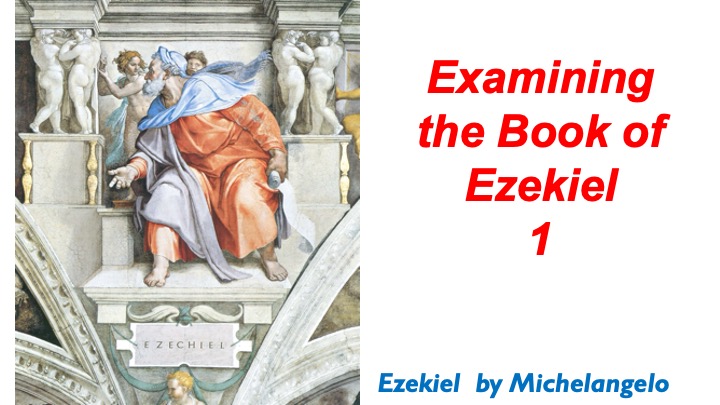
Welcome to class. We are continuing our examination of the major prophets this year and will focus on Examining the Book of Ezekiel.
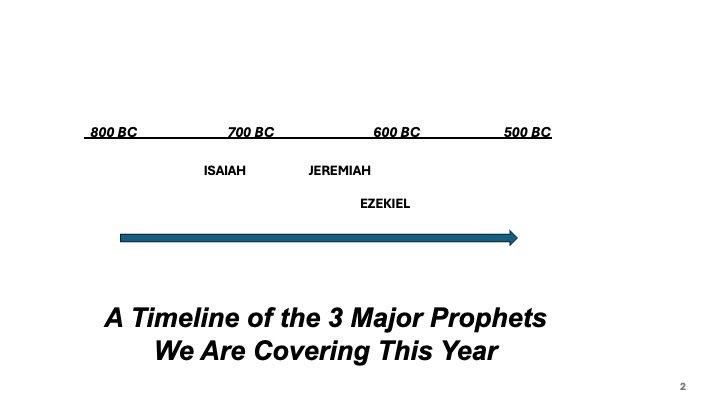
I wanted to begin with an overview of what we have been doing this year. We voted in class to hit three major prophets in 2024, Isaiah, Jeremiah, and Ezekiel. The term major refers to the length of the books. And this simple display shows there approximate times in which they prophesied.
And one of the major differences between the first two and Ezekiel is that the other two lived in Israel, but Ezekiel's entire prophetic career was entirely in Babylon - as he was carried into Babylonian exile after Nebuchadnezzar II's first besieging of Jerusalem, and only then was chosen by God as his prophet. There are a number of other differences with Ezekiel, especially the consistent use of highly visionary experiences that Ezekiel had - and we will get into that as we progress through these four weeks of Examining the Book of Ezekiel.
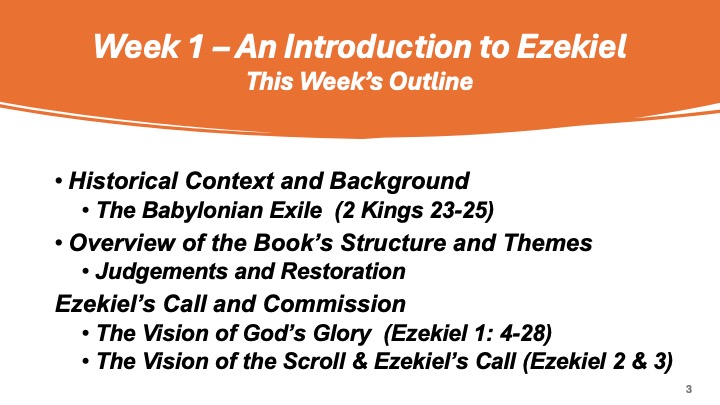
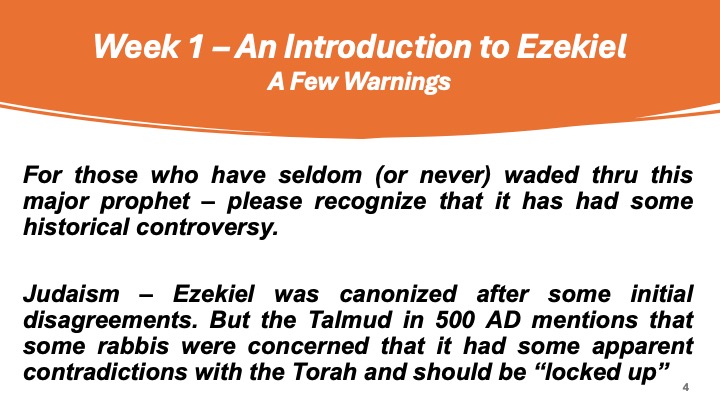
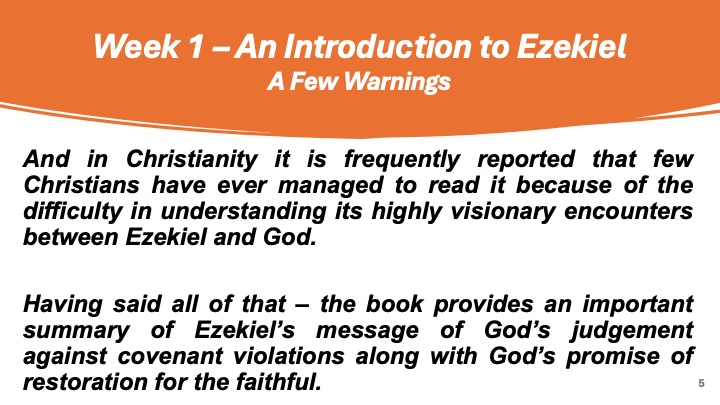
As we often say - historical context can be very important to understand - so we will begin Examining the Book of Ezekiel with a brief history of what led to the Babylonian exile. And since the book of Ezekiel does not have all of that context we are going to lift that from 2nd Kings chapters 23-25.
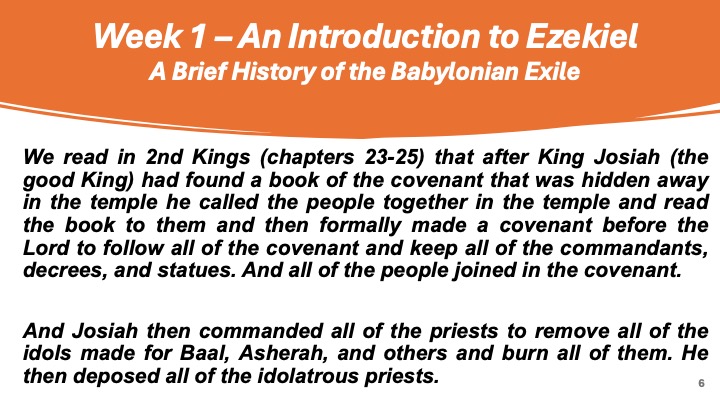
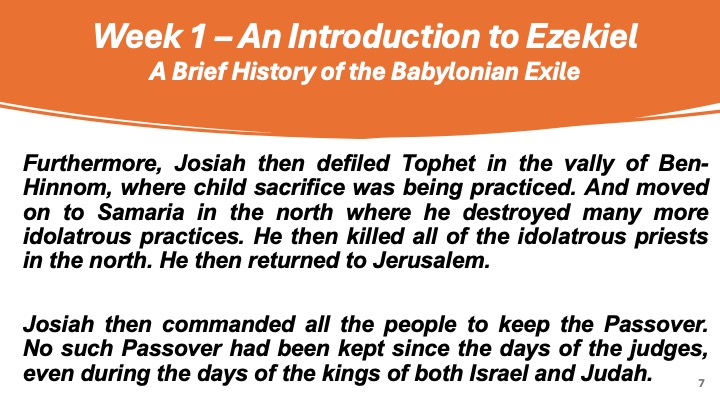
You. may remember Tophet in the valley of Ben-Hinnom because we reviewed that in reading Jeremiah. That valley outside the gates of Jerusalem contained a place called Tophet in which child sacrifice (an ancient Canaanite practice) was being routinely practiced.
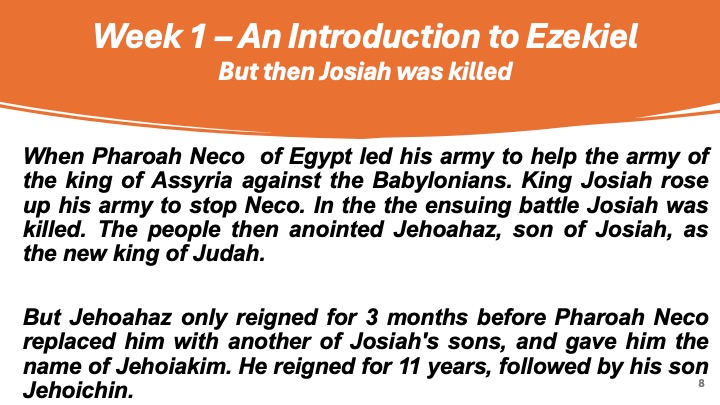
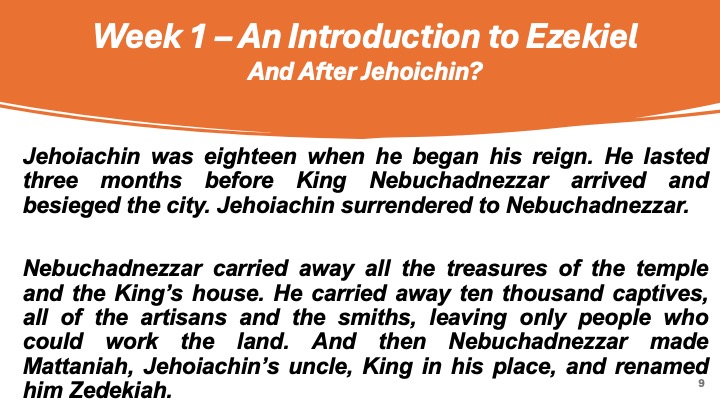
And we should mention that our hero Ezekiel was one of the captives of that first incursion by Nebuchadnezzar II and then spent the rest of his life living in Babylon.
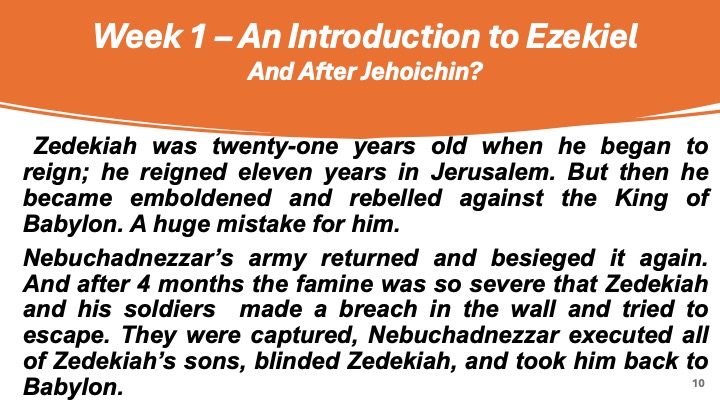
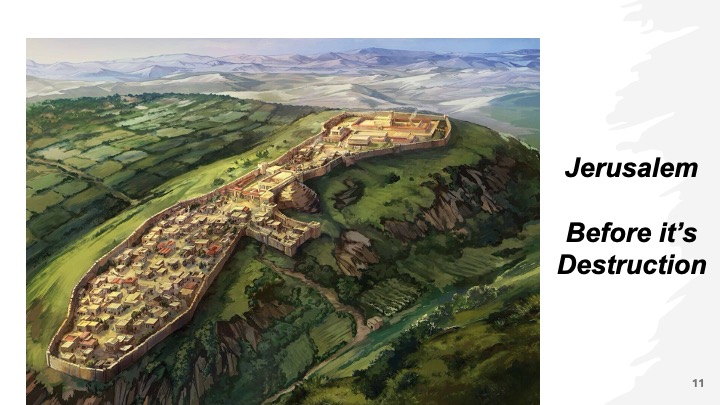
As you well know we have no actual photographs of biblical settings but this artist rendering could well represent Jerusalem and probably represents why Jerusalem was so difficult for invading armies - with high walls surrounding the city. For that reason the preferred military strategy was besieging - surrounding the city and cutting off food and water until famine eventually won out.
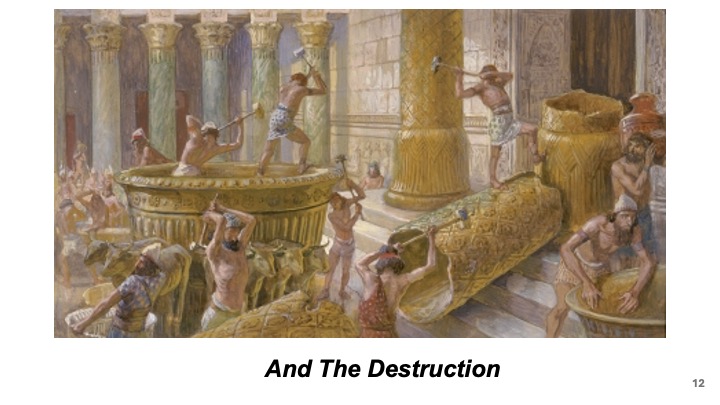
And Nebuchadnezzar II did a major looting job inside Jerusalem, carrying off major treasures from both the temple and the King's house.
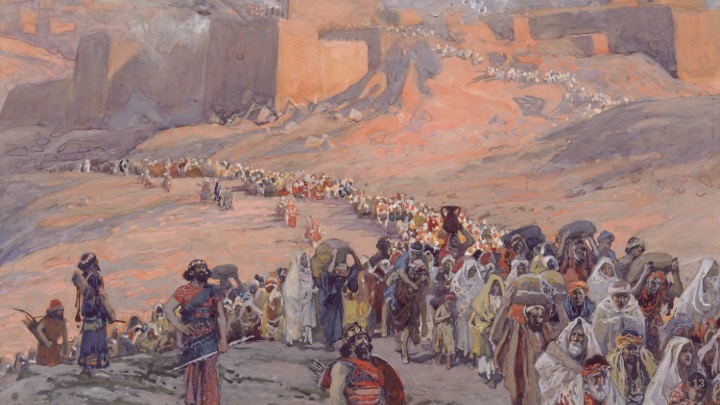
And another large number of captives were marched into Babylon. Let's look at the probable route.
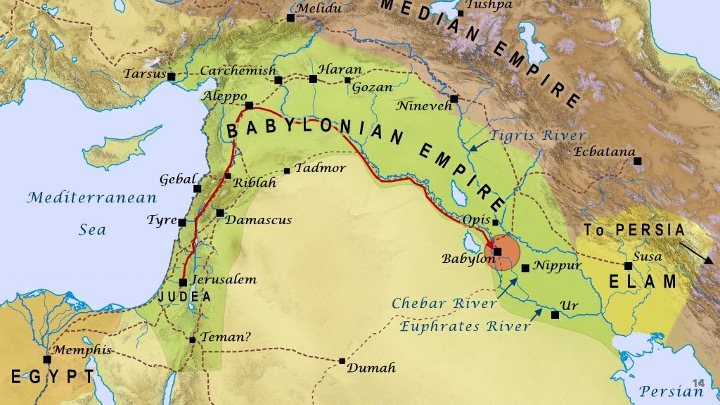
It is often reported that Nebuchadnezzar set up shop in Riblah (on this map) because he did not want to be too close to any actual fighting. And the red line from Jerusalem all the way to Babylon was the route used to march the captives into Babylon. And they were settled along the Chebar River (or canal).
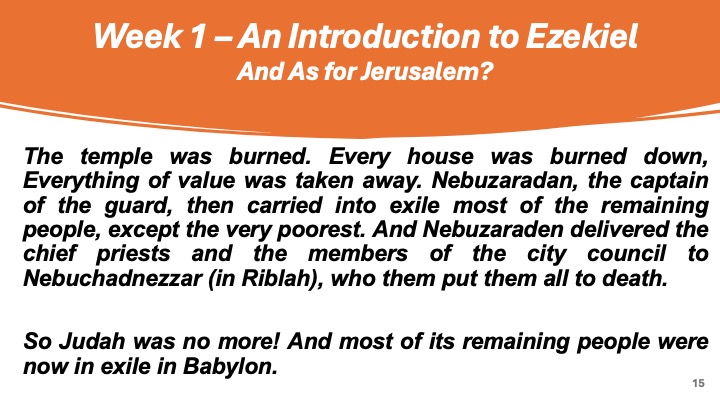
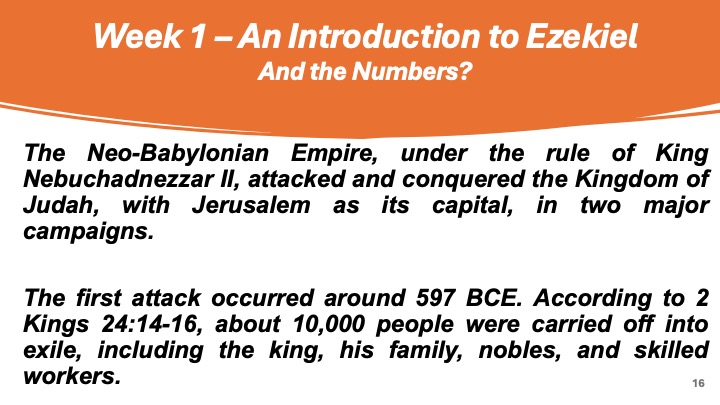
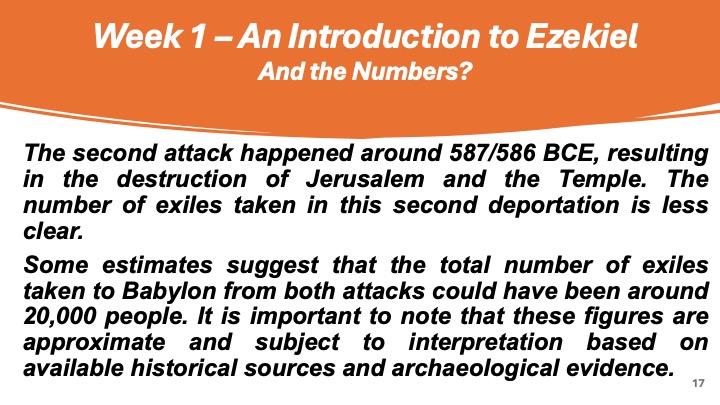
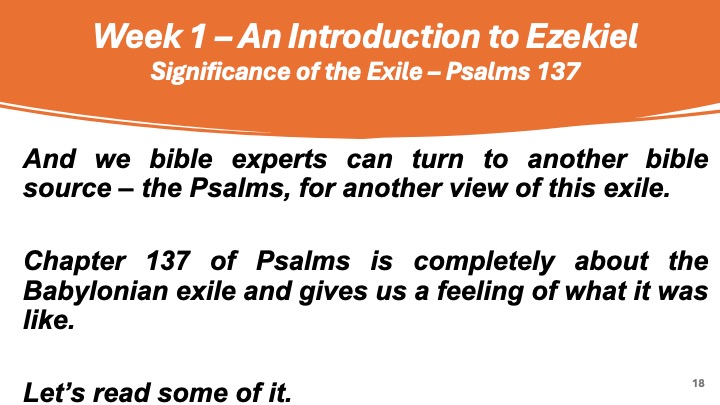
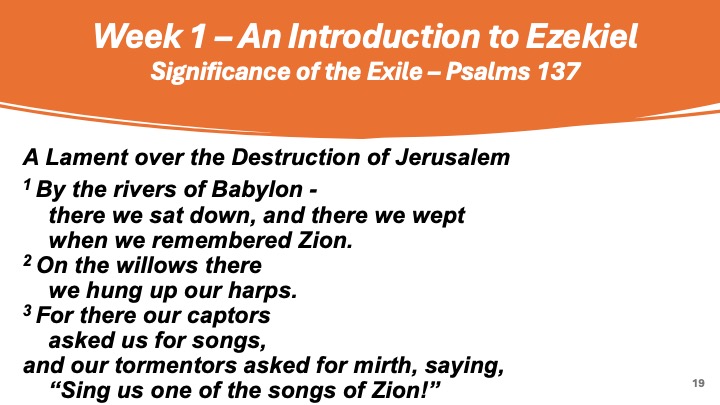
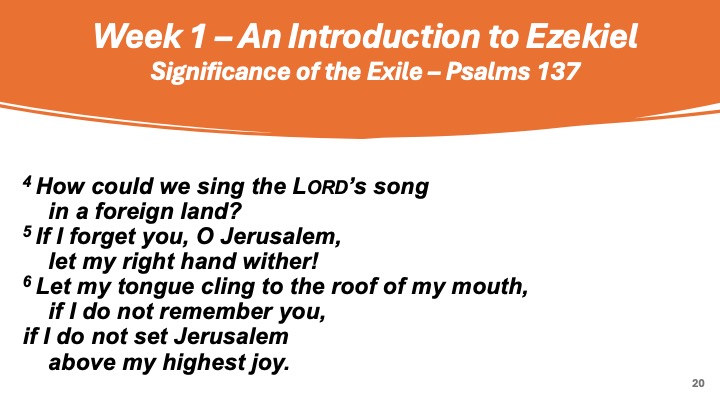
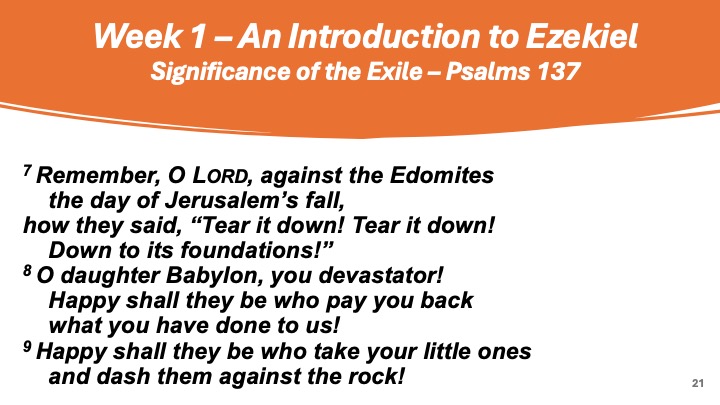
So now, in our our Examining the Book of Ezekiel, finally meet Exekiel. the first three chapters of Ezekiel in our Examining the Book of Ezekiel are rich in visionary and metaphorical imagery. So we begin our understanding of this in reading these first three chapters.
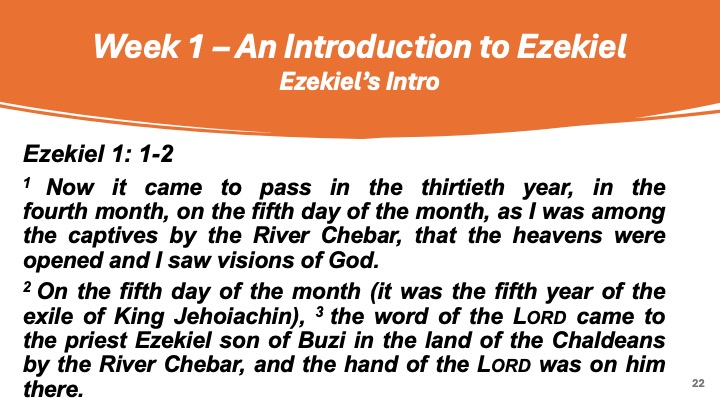
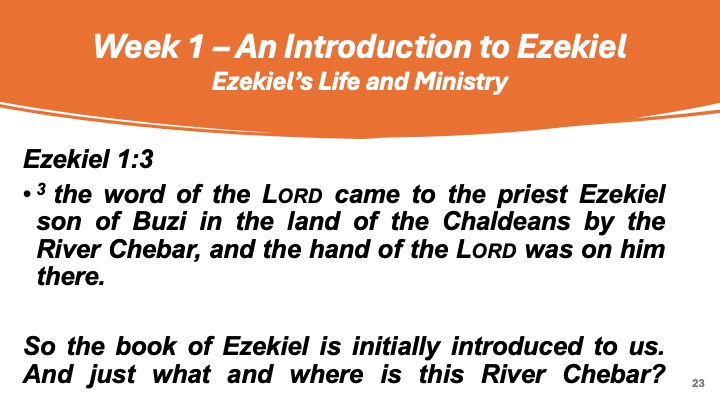
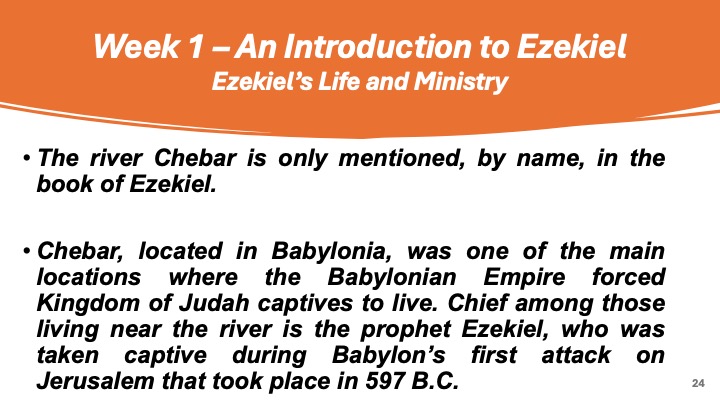
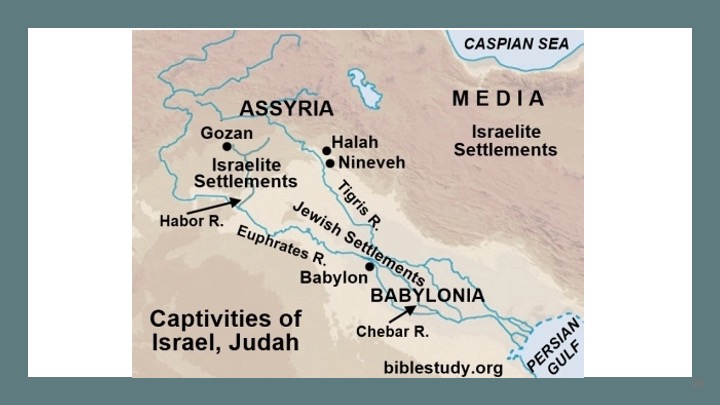
Here is another view of the Jewish settlements along the Chebar. Of other interest, this particular map indicates that some earlier captives from the Northern Kingdom by the Neo-Assyrian empire were settled northwest of the Babylonian exiles.
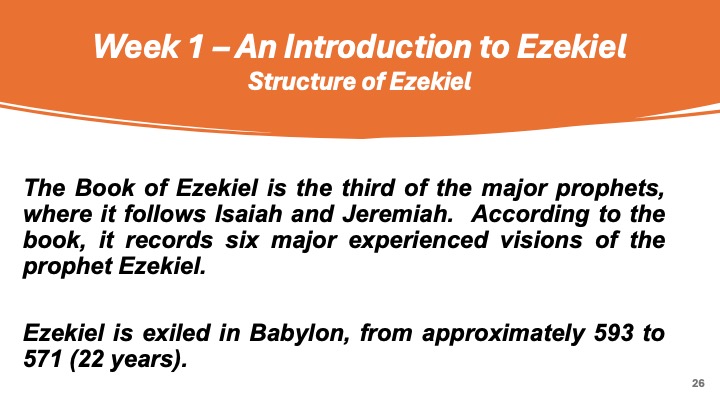
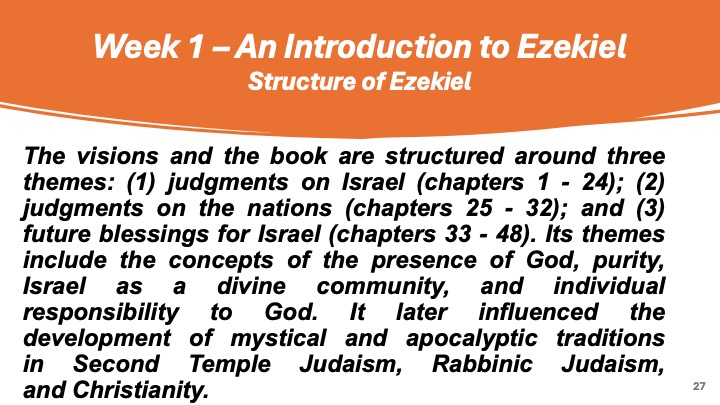
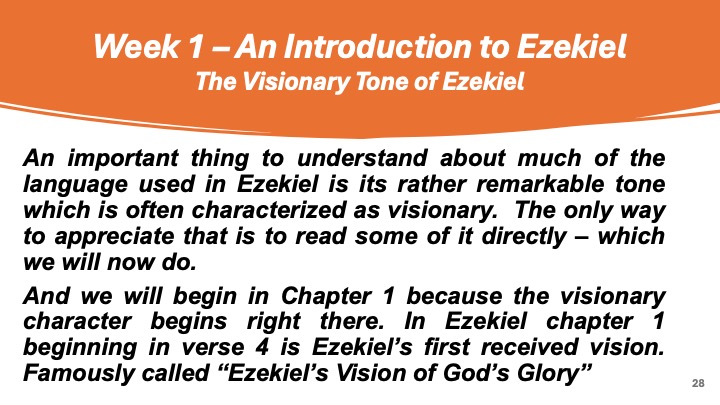
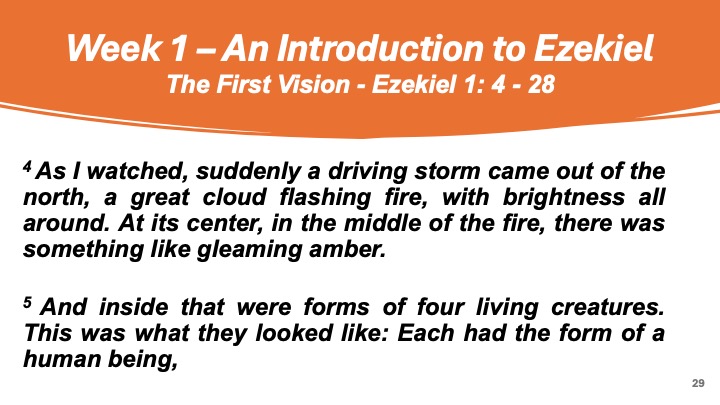
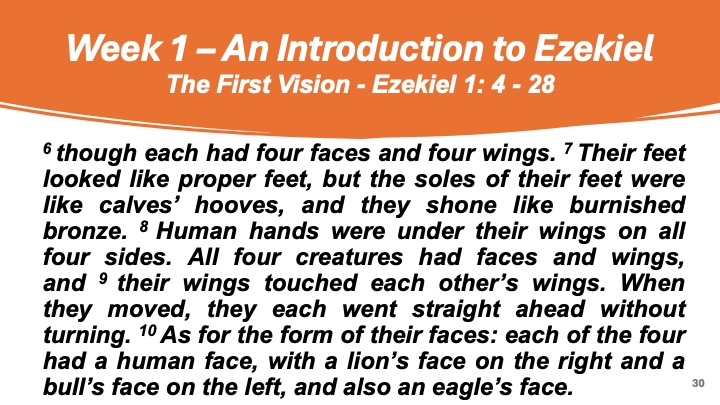
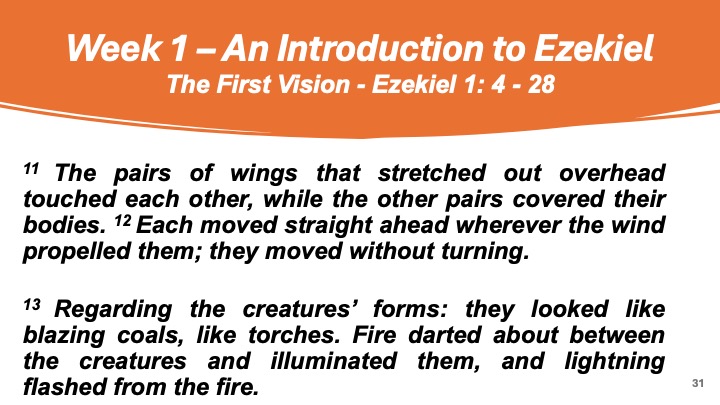
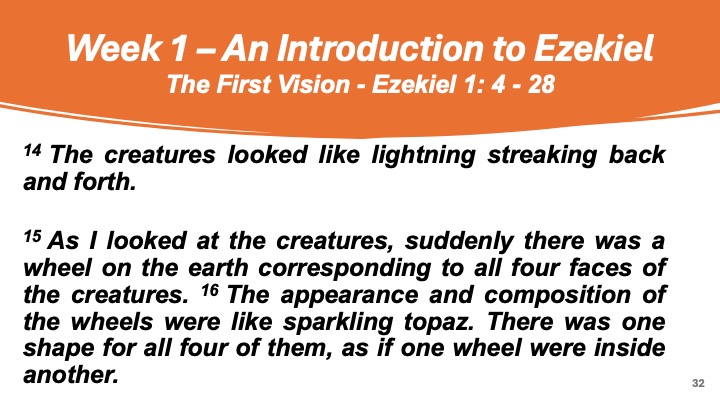
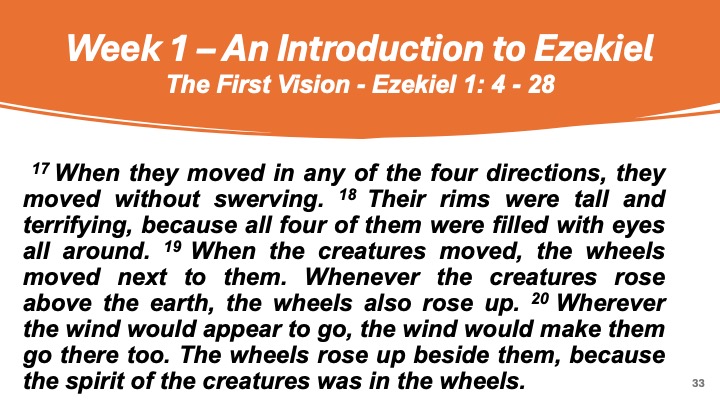
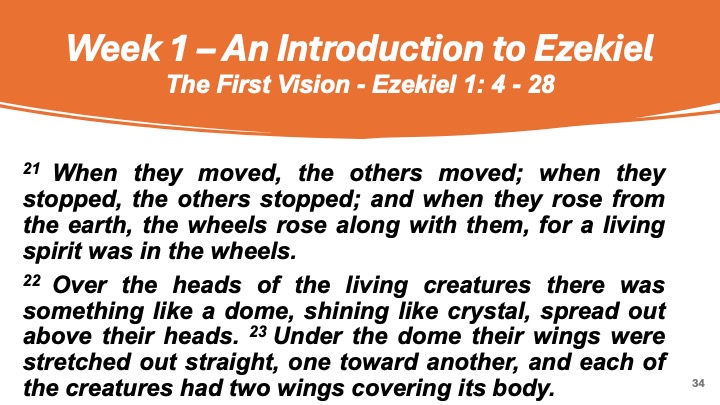
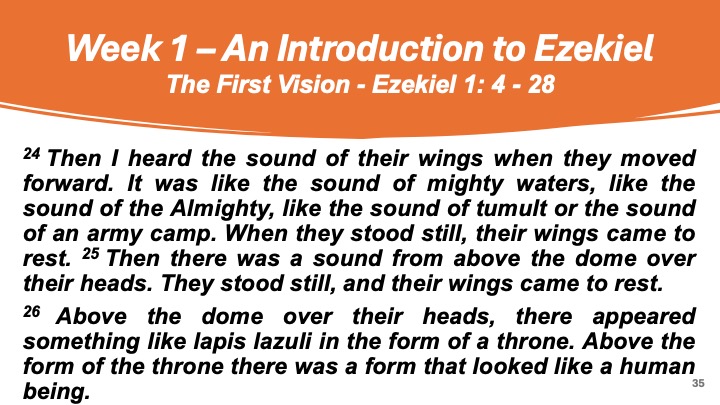
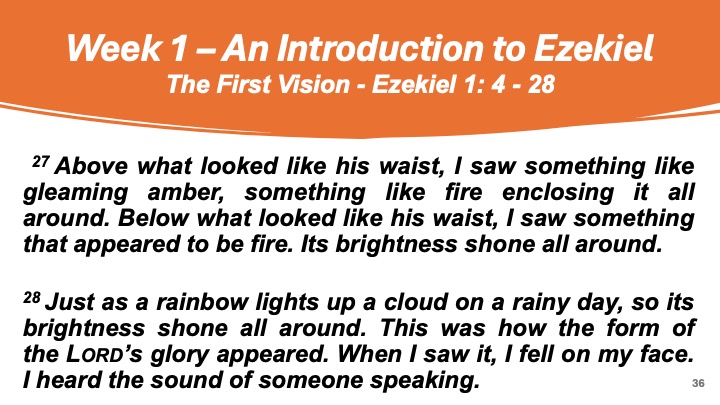
Now that you have heard in some detail what the Glory of the Lord looked like let's take a quick look at some artists renderings of what they experienced in reading this vision
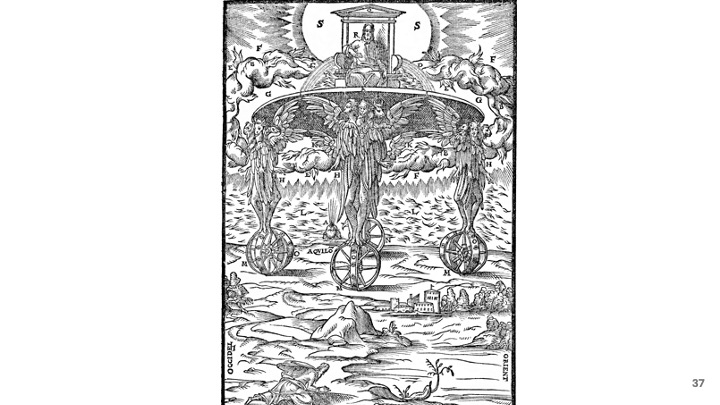
Here is one. You can see the winged creatures, each with four different faces and covered with wings. And they are standing on the wheels within wheels and seem to be supporting an overhead dome. And on that dome is a throne supporting a human like figure.
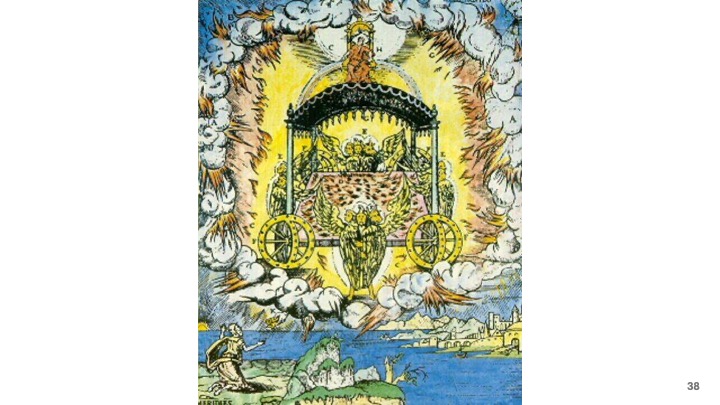
Here is another attempt.
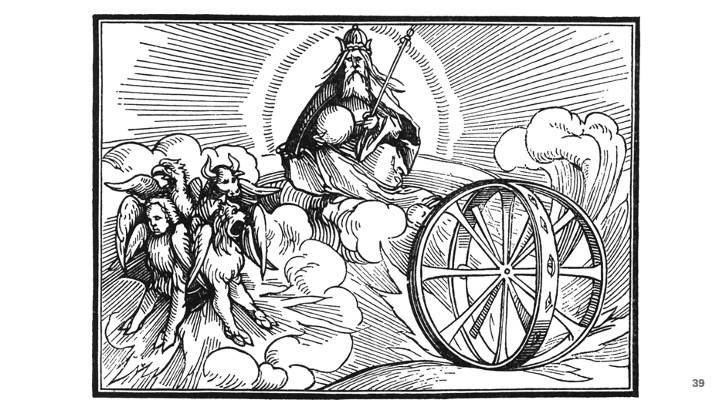
And another.
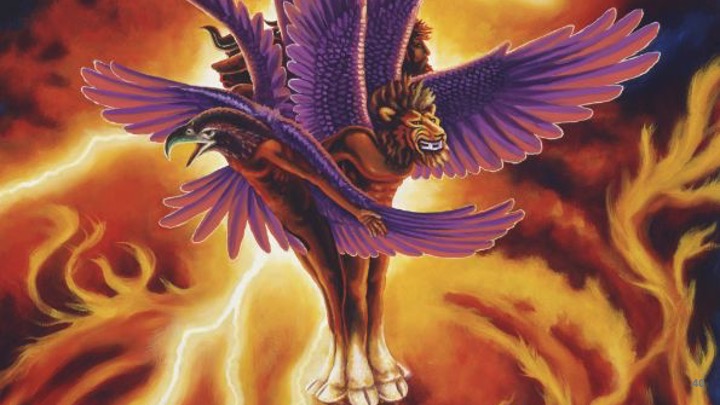
And an attempt to get a more detailed view of one of the winged creatures.
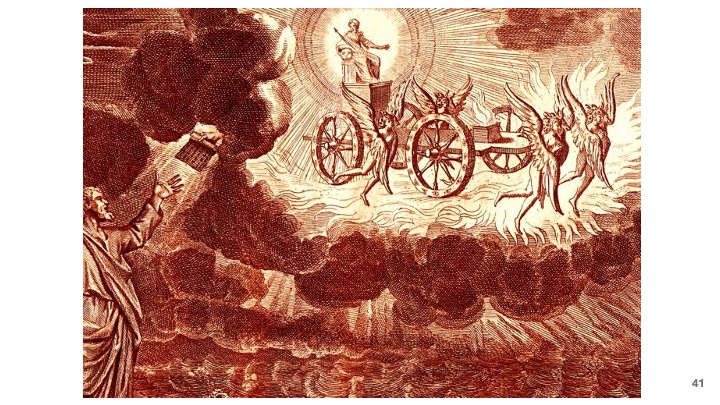
And an interesting attempt to portray the description as a chariot carrying the throne of the Lord. One of my favorites.
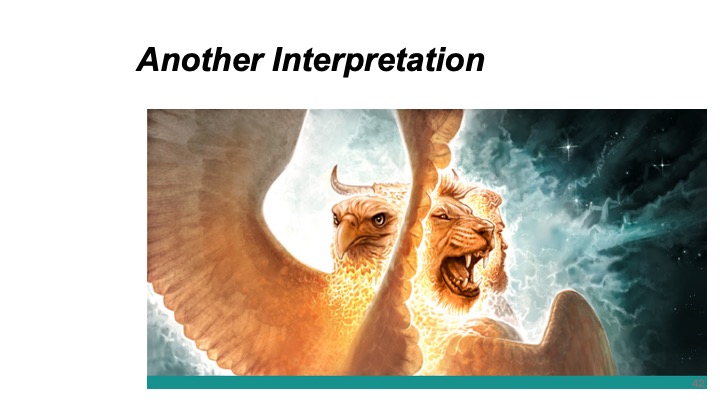
And finally a portrayal of more detail of one of the winged creatures. Note that this one more clearly relates the four faces of the winged creatures - a lion, a man, an eagle and at least the horn of the ox.
But let's now move on the Chapter 2. Known as the Vision of the Scroll.
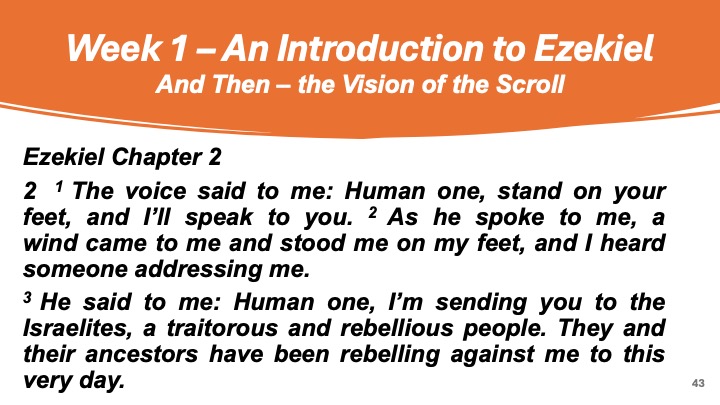
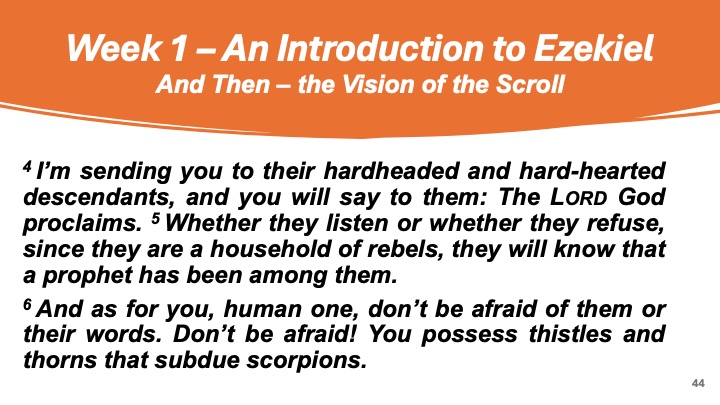
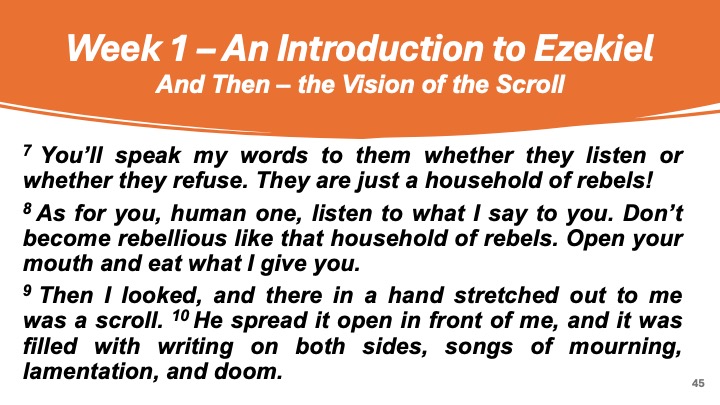
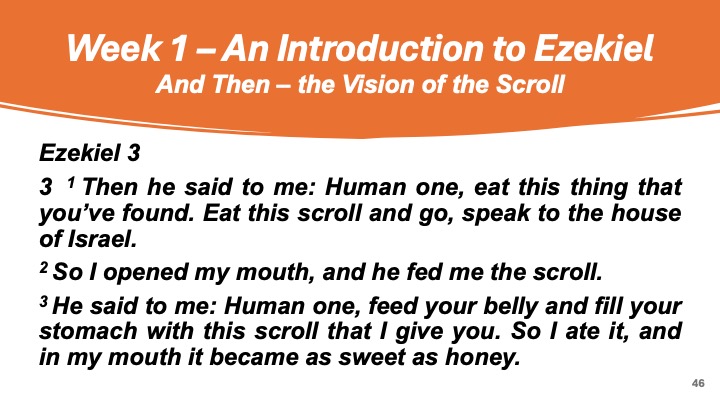
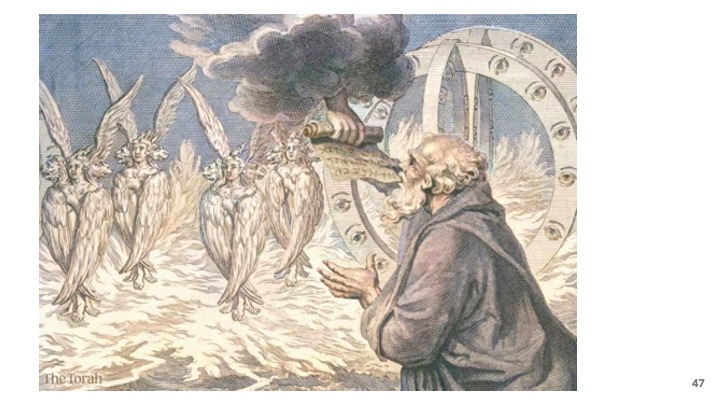
And here we see another artist rendition of Ezekiel definitely earing the scroll, which we are told tasted sweeter than honey.
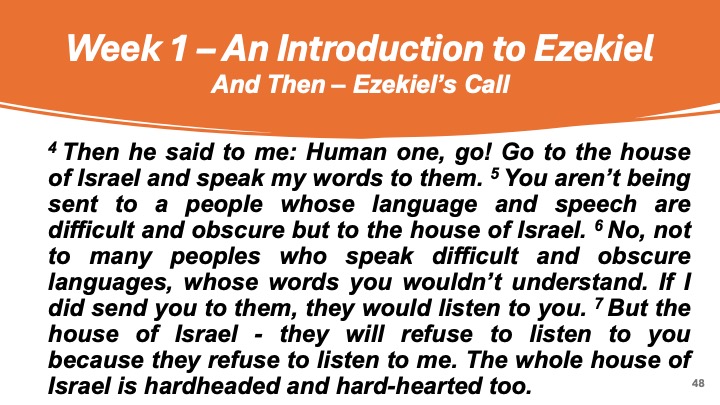
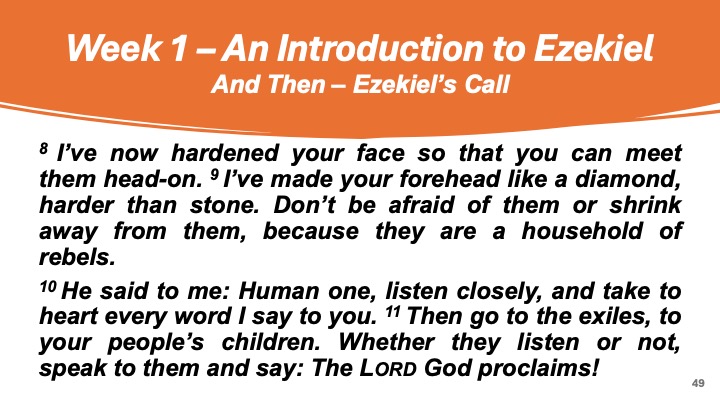
And finally, yet another short vision that moved Ezekiel back to the Chebar River where he stayed, exhausted for 7days.
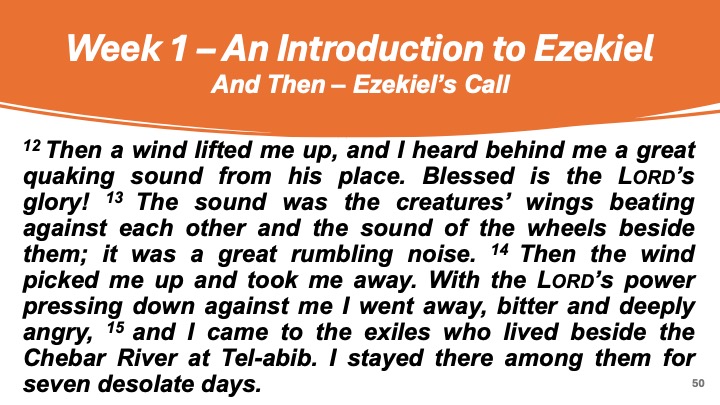
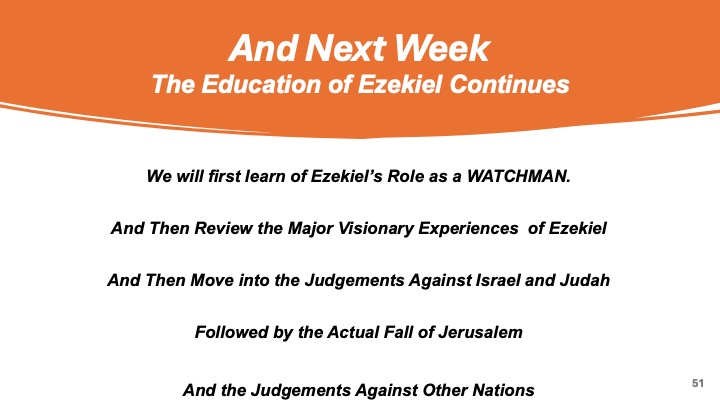
Examining Book of Ezekiel 1
Links
< Home Page > < Examining Ezekiel Menu > < Top of Page >
Examining Book of Ezekiel -1 Text
Examining the Book of Ezekiel 1 Text
We begin with. well known piece of art from the Sistine Chapel by Michelangelo. Of course we actually have no idea of what he looked like.
Then in slide 2 we show an approximate timeline of the three major prophets we are studying this year. And one of the points we want to make about Ezekiel is that unlike Isaiah and Jeremiah, Ezekiel's entire prophetic career was not in Israel or Judah – it was all in Babylon, where he was an exile.
Week 1 – An Introduction to Examining the Book of Ezekiel
This Week’s Outline
Historical Context and Background
The Babylonian Exile (2 Kings 23-25)
Overview of the Book’s Structure and Themes
Judgements and Restoration
Ezekiel’s Call and Commission
The Vision of God’s Glory (Ezekiel 1: 4-28)
A Few Warnings
For those who have seldom (or never) waded thru this major prophet – please recognize that it has had some historical controversy.
Judaism – Ezekiel was canonized after some initial disagreements. But the Talmud mentions that some rabbis were concerned that it had some apparent contradictions with the Torah.
A Few Warnings
And in Christianity it is frequently reported that few Christians have ever managed to read it because of the difficulty in understanding its highly visionary encounters between Ezekiel and God.
Having said all of that – the book provides an important summary of Ezekiel’s message of God’s judgement against covenant violations along with God’s promise of restoration for the faithful.
Week 1 – An Introduction to Examining the Book of Ezekiel
A Brief History of the Babylonian Exile
We read in 2nd Kings (chapters 23-25) that after King Josiah (the good King) had found the book of the covenant that was hidden away in the temple he called the people together in the temple and read the book to them and then formally made a covenant before the Lord to follow all of the covenant and keep all of the commandants, decrees, and statues. And all of the people joined in the covenant.
And Josiah then commanded all of the priests to remove all of the idols made for Baal, Asherah, and others and burn all of them. He then deposed all of the idolatrous priests.
Furthermore, Josiah then defiled Tophet in the vally of Ben-Hinnom, where child sacrifice was being practiced. And moved on to Samaria in the north where he destroyed many more idolatrous practices. He then killed all of the idolatrous priests in the north. He then returned to Jerusalem.
Josiah then commanded all the people to keep the Passover. No such Passover had been kept since the days of the judges, even during the days of the kings of both Israel and Judah.
And After Jehoichin?
Jehoiachin was eighteen when he began his reign. He lasted three months before King Nebuchadnezzar arrived and besieged the city. Jehoiachin surrendered to Nebuchadnezzar.
Nebuchadnezzar carried away all the treasures of the temple and the King’s house. He carried away ten thousand captives, all of the artisans and the smiths, leaving only people who could work the land. And then Nebuchadnezzar made Mattaniah, Jehoiachin’s uncle, King in his place, and renamed him Zedekiah.
Zedekiah was twenty-one years old when he began to reign; he reigned eleven years in Jerusalem. But then he became emboldened and rebelled against the King of Babylon. A huge mistake for him.
Nebuchadnezzar’s army returned and besieged it again. And after 4 months the famine was so severe that Zedekiah and his soldiers made a breach in the wall and tried to escape. They were captured, Nebuchadnezzar executed all of Zedekiah’s sons, blinded Zedekiah, and took him back to Babylon.
And As for Jerusalem?
The temple was burned. Every house was burned down, Everything of value was taken away. Nebuzaradan, the captain of the guard, then carried into exile most of the remaining people, except the very poorest. And Nebuzaraden delivered the chief priests and the members of the city council to Nebuchadnezzar, who them put them all to death.
So Judah was no more! And most of its remaining people were now in exile in Babylon.
And the Numbers?
The Neo-Babylonian Empire, under the rule of King Nebuchadnezzar II, attacked and conquered the Kingdom of Judah, with Jerusalem as its capital, in two major campaigns.
The first attack occurred around 597 BCE. According to 2 Kings 24:14-16, about 10,000 people were carried off into exile, including the king, his family, nobles, and skilled workers.
The second attack happened around 587/586 BCE, resulting in the destruction of Jerusalem and the Temple. The number of exiles taken in this second deportation is less clear.
Some estimates suggest that the total number of exiles taken to Babylon from both attacks could have been around 20,000 people. It is important to note that these figures are approximate and subject to interpretation based on available historical sources and archaeological evidence.
More on Examining the Book of Ezekiel
Significance of the Exile – Psalms 137
And we bible experts can turn to another bible source – the Psalms, for another view of this exile.
Chapter 137 of Psalms is completely about the Babylonian exile, and gives us a feeling of what it was like.
Let’s read some of it.
A Lament over the Destruction of Jerusalem
1 By the rivers of Babylon -
there we sat down, and there we wept
when we remembered Zion.
2 On the willows there
we hung up our harps.
3 For there our captors
asked us for songs,
and our tormentors asked for mirth, saying,
“Sing us one of the songs of Zion!”
4 How could we sing the Lord’s
song
in a foreign land?
5 If I forget you, O Jerusalem,
let my right hand wither!
6 Let my tongue cling to the roof of my mouth,
if I do not remember you,
if I do not set Jerusalem
above my highest joy.
7 Remember, O Lord, against the
Edomites
the day of Jerusalem’s fall,
how they said, “Tear it down! Tear it down!
Down to its foundations!”
8 O daughter Babylon, you devastator!
Happy shall they be who pay you back
what you have done to us!
9 Happy shall they be who take your little ones
and dash them against the rock!
Ezekiel’s Introduction
Ezekiel 1: 1-2
1 Now it came to pass in the thirtieth year, in the fourth month, on the fifth day of the month, as I was among the captives by the River Chebar, that the heavens were opened and I saw visions of God.
2 On the fifth day of the month (it was the fifth year of the exile of King Jehoiachin), 3 the word of the Lord came to the priest Ezekiel son of Buzi in the land of the Chaldeans by the River Chebar, and the hand of the Lord was on him there.
More on Examining the Book of Ezekiel
Ezekiel’s Life and Ministry
Ezekiel 1:3
3 the word of the Lord came to the priest Ezekiel son of Buzi in the land of the Chaldeans by the River Chebar, and the hand of the Lord was on him there.
So the book of Ezekiel is initially introduced to us. And just what and where is this River Chebar?
The Structure of the Book
The Book of Ezekiel is the third of the major prophets, where it follows Isaiah and Jeremiah. According to the book, it records six major experienced visions of the prophet Ezekiel.
Ezekiel is exiled in Babylon, from approximately 593 to 571 (22 years).
The visions and the book are structured around three themes: (1) judgments on Israel (chapters 1 - 24); (2) judgments on the nations (chapters 25 - 32); and (3) future blessings for Israel (chapters 33 - 48). Its themes include the concepts of the presence of God, purity, Israel as a divine community, and individual responsibility to God. It later influenced the development of mystical and apocalyptic traditions in Second Temple Judaism, Rabbinic Judaism, and Christianity.
More on Examining the Book of Ezekiel
The Visionary Tone of Ezekiel
An important thing to understand about much of the language used in Ezekiel is its rather remarkable tone which is often characterized as visionary. The only way to appreciate that is to read some of it directly – which we will now do.
And we will begin in Chapter 1 because the visionary character begins right there. In Ezekiel chapter 1 beginning in verse 4 is Ezekiel’s first received vision. Famously called “Ezekiel’s Vision of God’s Glory”
The First Vision - Ezekiel 1: 4 – 28
4 As I watched, suddenly a driving storm came out of the north, a great cloud flashing fire, with brightness all around. At its center, in the middle of the fire, there was something like gleaming amber.
5 And inside that were forms of four living creatures. This was what they looked like: Each had the form of a human being,
6 though each had four faces and four wings. 7 Their feet looked like proper feet, but the soles of their feet were like calves’ hooves, and they shone like burnished bronze. 8 Human hands were under their wings on all four sides. All four creatures had faces and wings, and 9 their wings touched each other’s wings. When they moved, they each went straight ahead without turning. 10 As for the form of their faces: each of the four had a human face, with a lion’s face on the right and a bull’s face on the left, and also an eagle’s face.
11 The pairs of wings that stretched out overhead touched each other, while the other pairs covered their bodies. 12 Each moved straight ahead wherever the wind propelled them; they moved without turning.
13 Regarding the creatures’ forms: they looked like blazing coals, like torches. Fire darted about between the creatures and illuminated them, and lightning flashed from the fire.
14 The creatures looked like lightning streaking back and forth.
15 As I looked at the creatures, suddenly there was a wheel on the earth corresponding to all four faces of the creatures. 16 The appearance and composition of the wheels were like sparkling topaz. There was one shape for all four of them, as if one wheel were inside another.
17 When they moved in any of the four directions, they moved without swerving. 18 Their rims were tall and terrifying, because all four of them were filled with eyes all around. 19 When the creatures moved, the wheels moved next to them. Whenever the creatures rose above the earth, the wheels also rose up. 20 Wherever the wind would appear to go, the wind would make them go there too. The wheels rose up beside them, because the spirit of the creatures was in the wheels.
21 When they moved, the others moved; when they stopped, the others stopped; and when they rose from the earth, the wheels rose along with them, for a living spirit was in the wheels.
22 Over the heads of the living creatures there was something like a dome, shining like crystal, spread out above their heads. 23 Under the dome their wings were stretched out straight, one toward another, and each of the creatures had two wings covering its body.
24 Then I heard the sound of their wings when they moved forward. It was like the sound of mighty waters, like the sound of the Almighty, like the sound of tumult or the sound of an army camp. When they stood still, their wings came to rest. 25 Then there was a sound from above the dome over their heads. They stood still, and their wings came to rest.
26 Above the dome over their heads, there appeared something like lapis lazuli in the form of a throne. Above the form of the throne there was a form that looked like a human being.
27 Above what looked like his waist, I saw something like gleaming amber, something like fire enclosing it all around. Below what looked like his waist, I saw something that appeared to be fire. Its brightness shone all around.
28 Just as a rainbow lights up a cloud on a rainy day, so its brightness shone all around. This was how the form of the Lord’s glory appeared. When I saw it, I fell on my face. I heard the sound of someone speaking.
More on Examining the Book of Ezekiel
Ezekiel Chapter 2
2 1 The voice said to me: Human one, stand on your feet, and I’ll speak to you. 2 As he spoke to me, a wind came to me and stood me on my feet, and I heard someone addressing me.
3 He said to me: Human one, I’m sending you to the Israelites, a traitorous and rebellious people. They and their ancestors have been rebelling against me to this very day.
4 I’m sending you to their hardheaded and hard-hearted descendants, and you will say to them: The Lord God proclaims. 5 Whether they listen or whether they refuse, since they are a household of rebels, they will know that a prophet has been among them.
6 And as for you, human one, don’t be afraid of them or their words. Don’t be afraid! You possess thistles and thorns that subdue scorpions.
7 You’ll speak my words to them whether they listen or whether they refuse. They are just a household[c] of rebels!
8 As for you, human one, listen to what I say to you. Don’t become rebellious like that household of rebels. Open your mouth and eat what I give you.
9 Then I looked, and there in a hand stretched out to me was a scroll. 10 He spread it open in front of me, and it was filled with writing on both sides, songs of mourning, lamentation, and doom.
More on Examining the Book of Ezekiel
Ezekiel 3
3 1 Then he said to me: Human one, eat this thing that you’ve found. Eat this scroll and go, speak to the house of Israel.
2 So I opened my mouth, and he fed me the scroll.
3 He said to me: Human one, feed your belly and fill your stomach with this scroll that I give you. So I ate it, and in my mouth it became as sweet as honey.
4 Then he said to me: Human one, go! Go to the house of Israel and speak my words to them. 5 You aren’t being sent to a people whose language and speech are difficult and obscure but to the house of Israel. 6 No, not to many peoples who speak difficult and obscure languages, whose words you wouldn’t understand. If I did send you to them, they would listen to you. 7 But the house of Israel - they will refuse to listen to you because they refuse to listen to me. The whole house of Israel is hardheaded and hard-hearted too.
8 I’ve now hardened your face so that you can meet them head-on. 9 I’ve made your forehead like a diamond, harder than stone. Don’t be afraid of them or shrink away from them, because they are a household of rebels.
10 He said to me: Human one, listen closely, and take to heart every word I say to you. 11 Then go to the exiles, to your people’s children. Whether they listen or not, speak to them and say: The Lord God proclaims!
12 Then a wind lifted me up, and I heard behind me a great quaking sound from his place. Blessed is the Lord’s glory! 13 The sound was the creatures’ wings beating against each other and the sound of the wheels beside them; it was a great rumbling noise. 14 Then the wind picked me up and took me away. With the Lord’s power pressing down against me I went away, bitter and deeply angry, 15 and I came to the exiles who lived beside the Chebar River at Tel-abib. I stayed there among them for seven desolate days.
And Next Week in Examining the Book of Ezekiel
The Education of Ezekiel Continues
We will first learn of Ezekiel’s Role as a WATCHMAN.
And Then Review the Major Visionary Experiences of Ezekiel
And Then Move into the Judgements Against Israel and Judah
Followed by the Actual Fall of Jerusalem
And the Judgements Against Other Nations